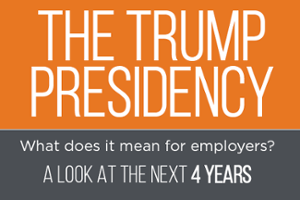 CHRIS TANKE
CHRIS TANKE
HNI Vice President and Transportation Practice Leader
No one wants a big rear end — a big rear-end accident, that is.
Jokes aside, rear-end collisions are among the most costly and likely to cause significant injuries to both parties. According to our numbers, an average rear-end claim costs upward of $30,000 in both bodily injury, property damage, and equipment damage.
The claims loss, however, only is part of the picture. There's also rebuilding the confidence of the truck driver who was involved in the crash and the brand damage to the company he works for.
Understanding why rear-end collisions occur is the first step to managing this risk. We usually see two types of causes for rear-end crashes:
1.) Speed/Following Distance
Laws of physics dictate that an 80,000-pound tractor-trailer takes much longer to stop than a car. Some truck drivers forget this and give themselves no margin for error in the event of a sudden stop brought on by following too close. Some car drivers also must need a refresher in physics, because they slice in front of a tractor and then hit the brakes.
It's always a challenge for professional drivers to maintain proper following distance at all times, but it is a must. No one can beat the laws of physics!
2.) Distraction
Drivers of both cars and trucks face many distractions. Some distractions include phones, texts, the radio, truck gauges, and even in-cab communication devices.
Visual and audio stimuli bombard everyone almost all the time. These stimuli can cause unintentional distraction for the driver of a vehicle. In just one or two seconds of distraction, you could end up hitting a vehicle in front who happened to stop.
No More Big Rear Ends
Preventing big rear-end collisions start with some best practices. Here's some successful strategies we've seen:
Training
Ongoing driver training on speed management and following distance is non-negotiable. Even though every professional driver should be aware of the dangers of following too close, constant reminders need to be in front of every driver. How important would it be to a driver to maintain proper following distance if they knew that their family was in the vehicle in front of the tractor? Put the consequences of a big rear-end in personal terms to optimize lessons from training.
Technology
Today’s technology makes it possible to track panic stops. Coaching and counseling sessions should be the norm after every panic stop. For some trucking firms, installing rear-end collision avoidance technology has paid big dividends in reducing rear-end collision frequency and severity. In-cab cameras also can shed light on what driver habits are increasing rear-end-crash risk.
Distraction Management
Many companies have policies to prevent drivers using cell phones while driving. The next level of phone policy could call for turning off the phone while driving. Let's face it: Push notifications, text messages, incoming calls and more all can cause momentary distraction for a driver. Why not eliminate these distractions all together?
No driver has ever set out to have a “big rear end.” Safety and operations professionals and drivers all can work toward minimizing the risk of these type of crashes.
Just think: It could be your family in that car up ahead!
Related Posts:
5 Things Drivers Never Should Do at the Scene of an Accident
Tracy Morgan Crash Shines Spotlight on Culture of Safety in Trucking
Wellness for Truck Drivers: What Makes This Problem So Wicked
How the Best Drivers Respond at the Scene of an Accident
.png?width=69&height=53&name=Acrisure%20Logo%20(White%20Horizontal).png)


